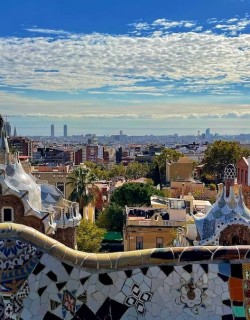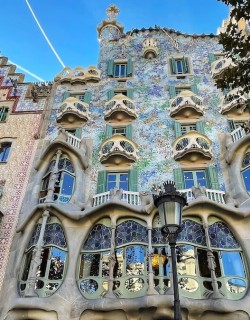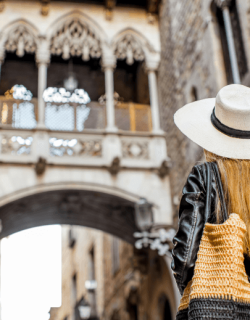One of the absolute highlights of Barcelona's dazzling Modernista architectural movement, the Palau de la Música Catalana is the Catalan capital's premier venue for classical music. The world's only UNESCO World Heritage Site listed concert hall, the ambitious venue was constructed to designs by renowned modernist architect Domènech i Montaner between 1905 and 1908 at the behest of the Orfeo Català musical society , and was intended from the outset to stand as a shining example of the renewed cultural spirit that was sweeping the newly wealthy city. This was the Catalan Renaixença , or Renaissance, in full bloom.
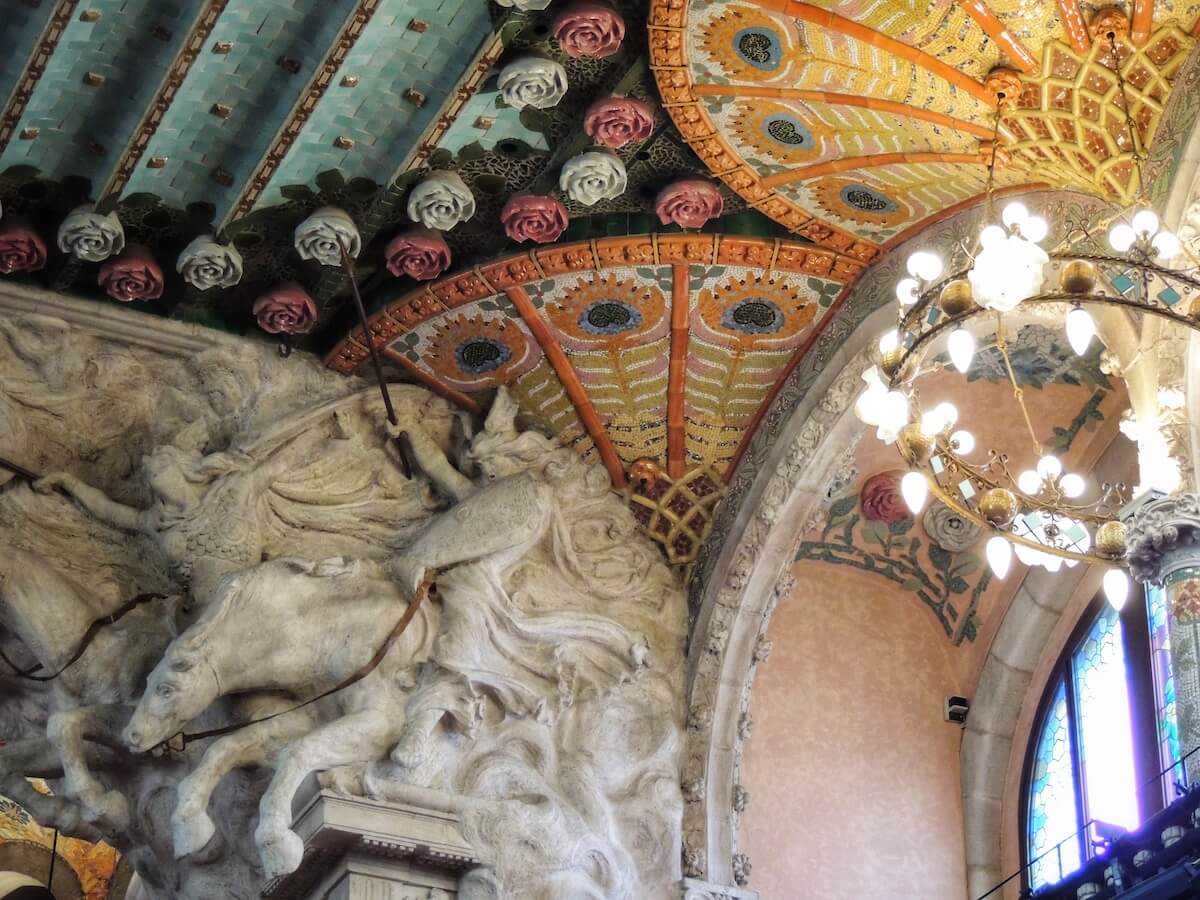
The Orfeò Català was situated at the vanguard of this movement of cultural regeneration, and resolved to commission a concert hall on a small site in their possession in the city's Gothic quarter . Funds were thin on the ground, but the society managed to raise enough capital via a public subscription campaign that was heavily supported by Barcelona's wealthy industrial elites and expanding bourgeoisie, who had already positioned themselves as refined patrons of the arts in the avant-garde townhouses that they were busy commissioning in the nearby Eixample neighbourhood .
Amongst the beneficiaries of the new wave of building sweeping the city were the architects Antoni Gaudí , whose Casa Batlló and Casa Milà would soon take their places as iconic examples of Catalan modernism , and Domènech i Montaner , whose art nouveau Hospital de Sant Pau is one of the city's finest public buildings. It was to the latter architect that the Orfeò Català turned to realize their plans for the new concert hall.
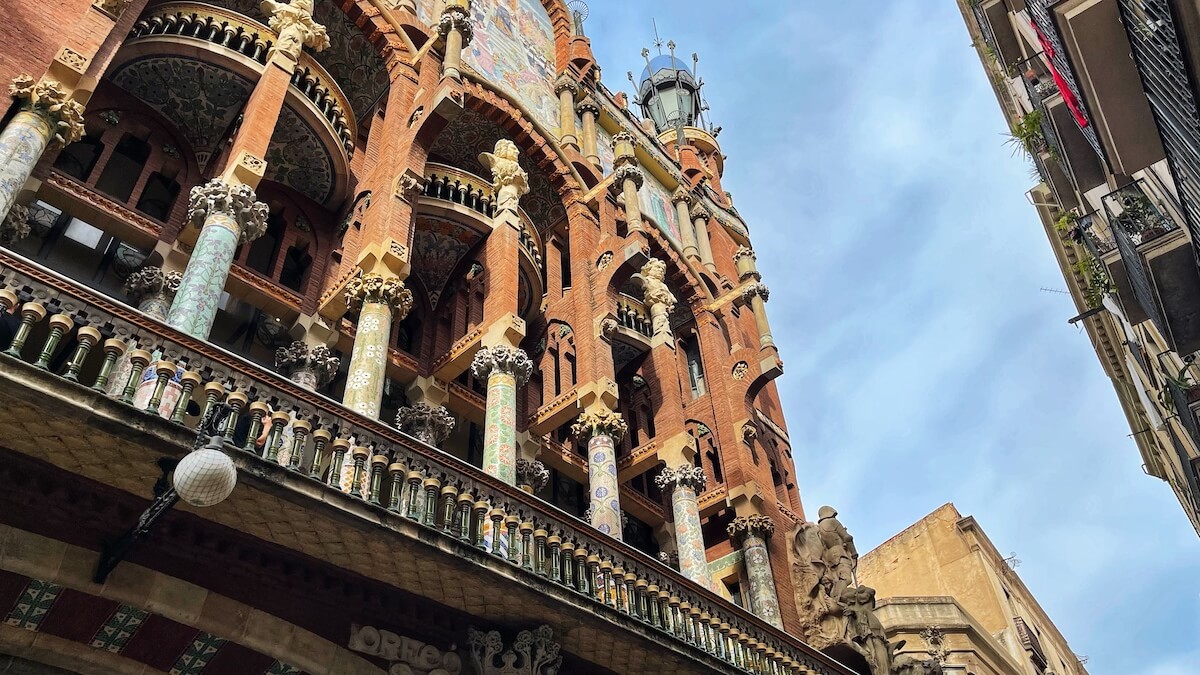
The impressive red-brick facade makes an immediate impression as you approach through the narrow and winding streets of Barcelona's Gothic quarter. Thick columns studded with elaborate mosaic decorations dominate the palace's exterior, and support a wide ornate balcony above. Sculptures depicting the patron saint of Barcelona - Saint George - slaying a dragon as well as portrait busts of famous Catalonian composers and musicians complete the decorative scheme.
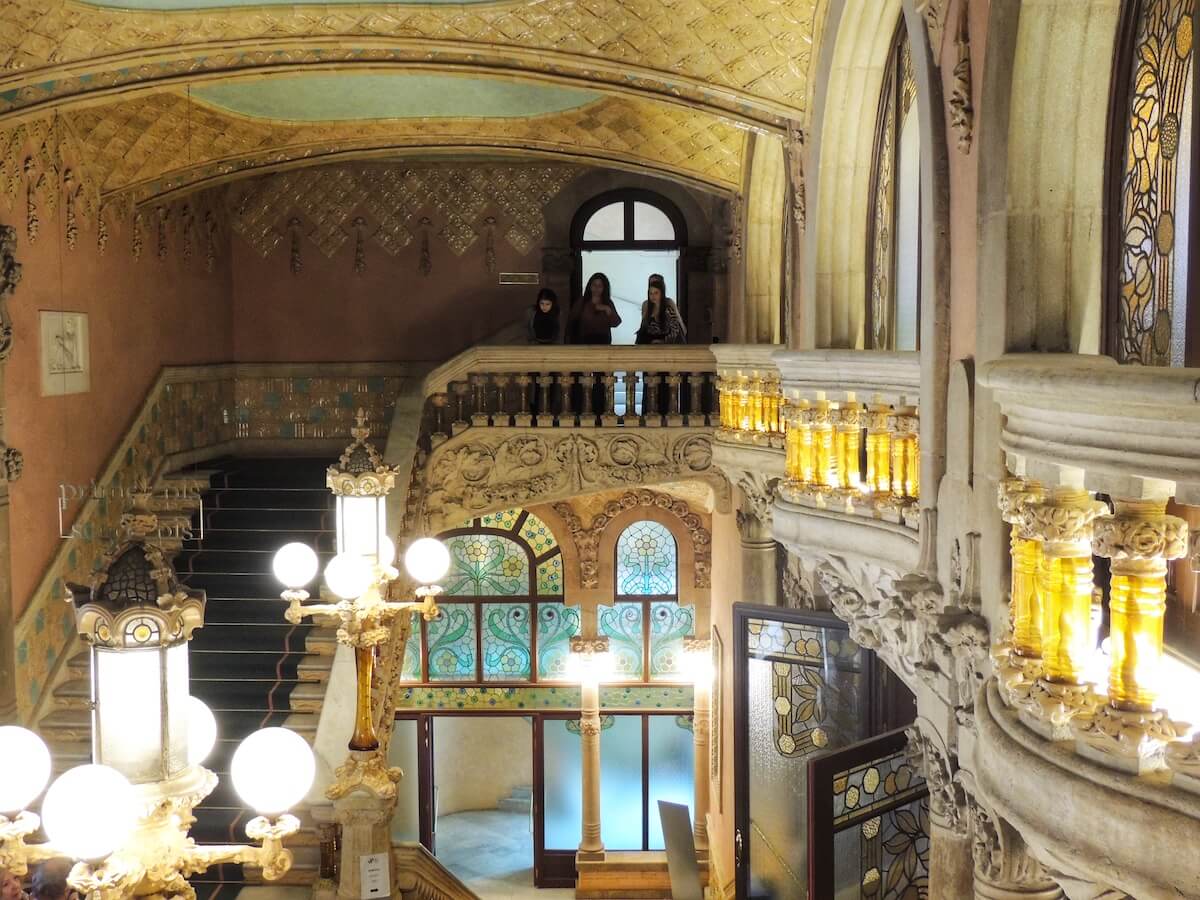
It's the interior where the Palau de la Música really wows, however. Entering, you'll be immediately confronted with the grand marble staircase that sweeps upwards from the foyer towards the rehearsal rooms and concert hall.

The glittering highlight of the complex is the auditorium itself. Plush red velvet seats host a capacity audience of 2,146 spectators beneath a truly extraordinary ceiling . Stained glass, intricate embossed floral designs, mosaics, fan vaulting and a kaleidoscope of colored tiles transform the auditorium into a fantastical dream-like environment. A series of 18 sculpted muses serves as classical inspiration for the musicians on-stage. A portrait bust of Beethoven and figures inspired by Wagner's Ride of the Valkyries add to the sense of musical history that pervades the hall.

The spectacular display is surmounted by a magnificent blue and gold stained glass skylight , an inverted dome that drops down into the space of the auditorium like a spoonful of honey suspended forever in midair. The colorful shafts of light refracted through the tinted glass that illuminate the hall during the day are truly thrilling.

Designs and patterns inspired by the natural world , such as the wrought-iron leaves that comprise the auditorium's chandeliers , showcase the central role that organic forms played in the visual language of Catalan modernist architecture - something that Gaudi would take to an extraordinary extreme in the Sagrada Familia in the decades to come.
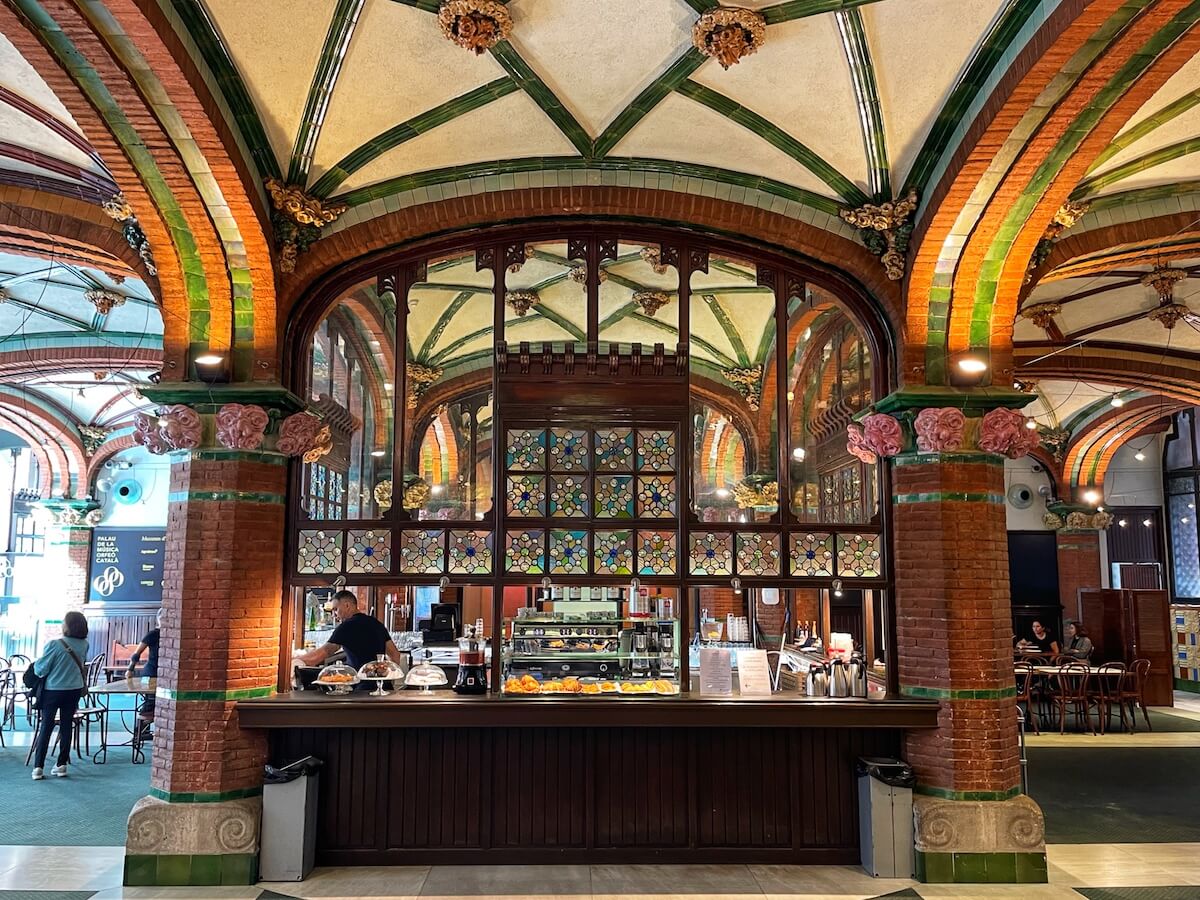
After exploring the concert hall and admiring the stunning architecture, pop down to the palace's beautiful foyer where a fine cafe-restaurant offers up modern takes on traditional Catalan cuisine. Settling down at a table amidst imposing brick pillars beneath the elegant vaults offers a lovely respite from the hustle and bustle of the surrounding city.
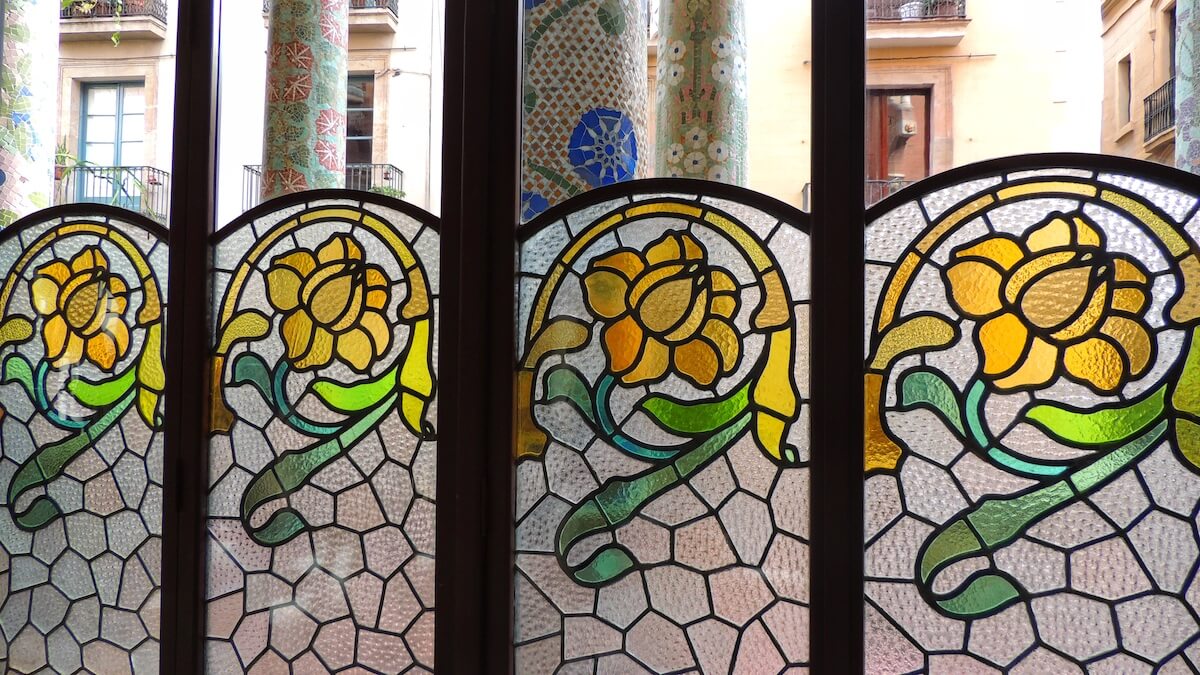
How to Visit: The most atmospheric way to experience the Palau de la Música Catalana is by attending a concert. Find the up-to-date program on the official website . If you don't have the time or inclination to take in a show, however, you can still visit the concert hall. Book your ticket online and choose between a self-guided tour via audio guide or a 55-minute in person guided tour.
We hope you enjoyed our guide to Barcelona's Palau de la Música Catalana! Through Eternity Tours offer a range of expert-led guided itineraries in the Catalan capital. To see the city at its best, join us on our Barcelona tours!

